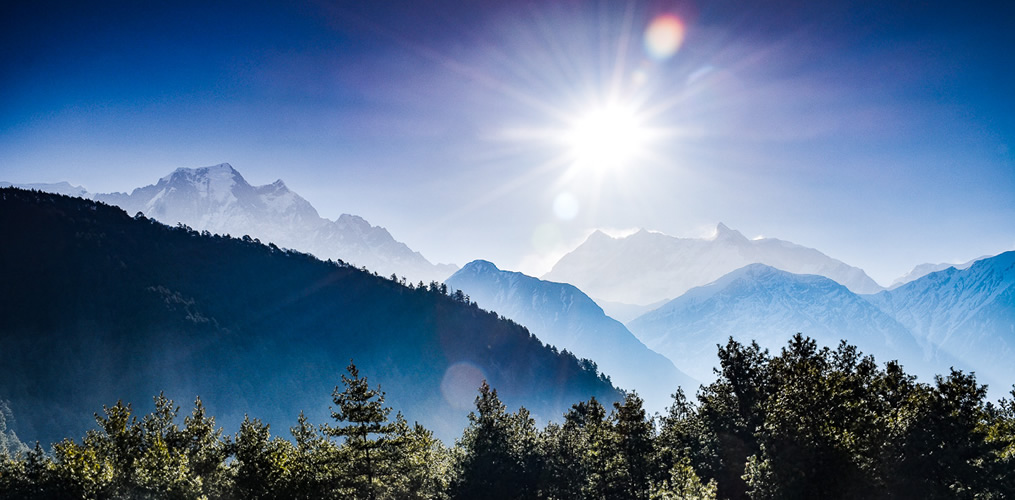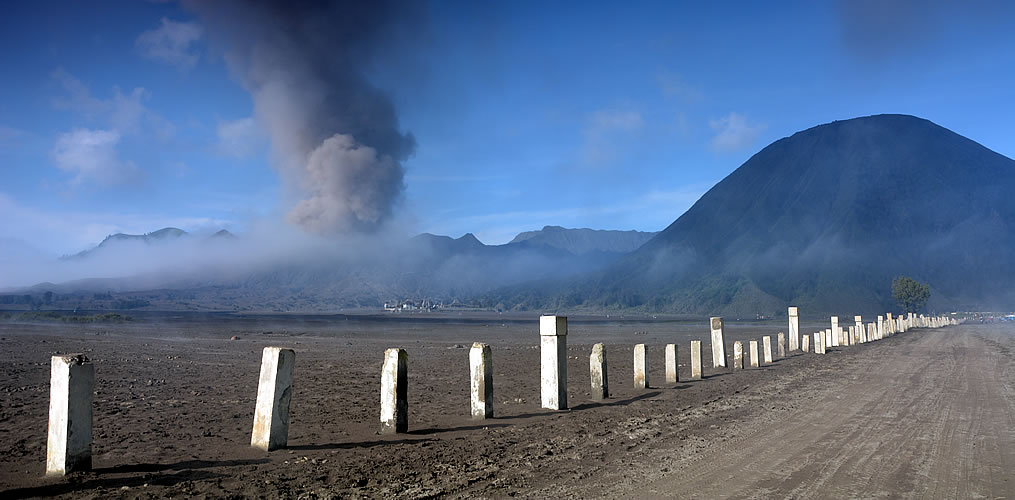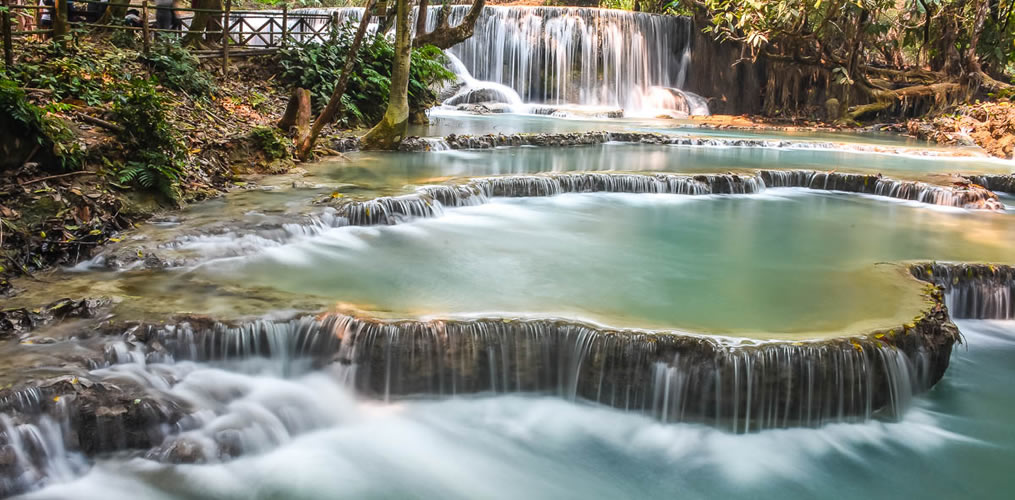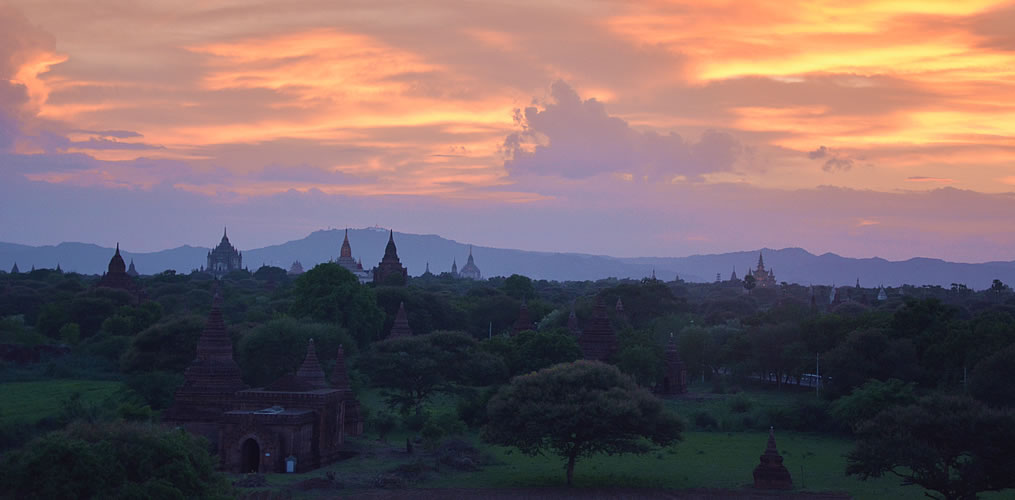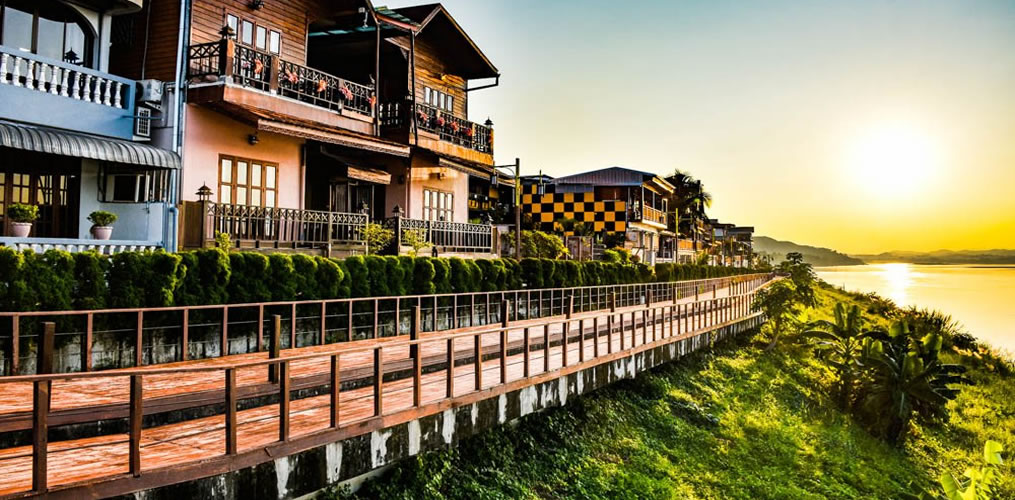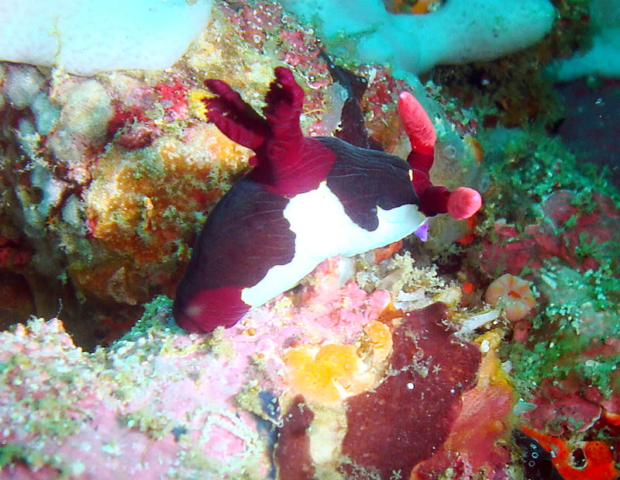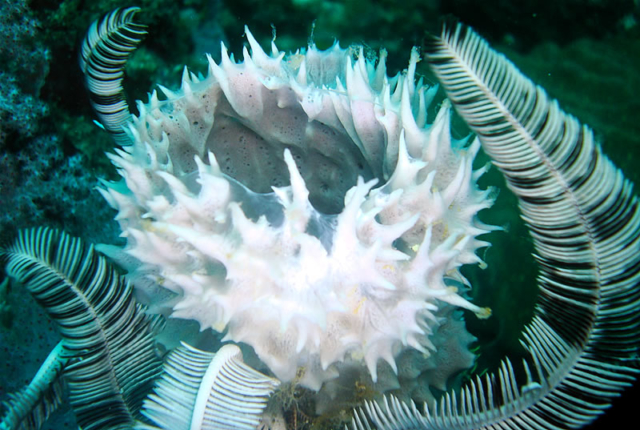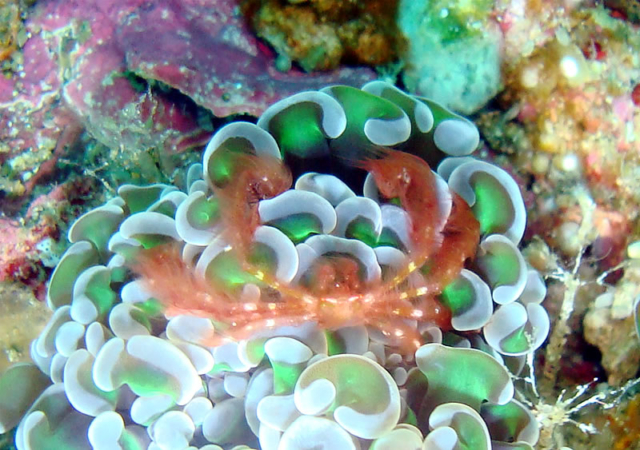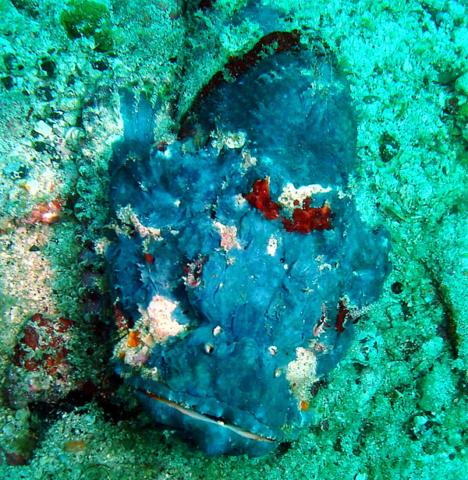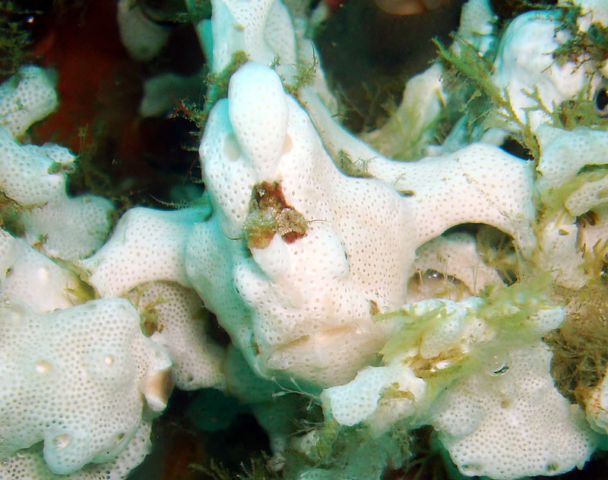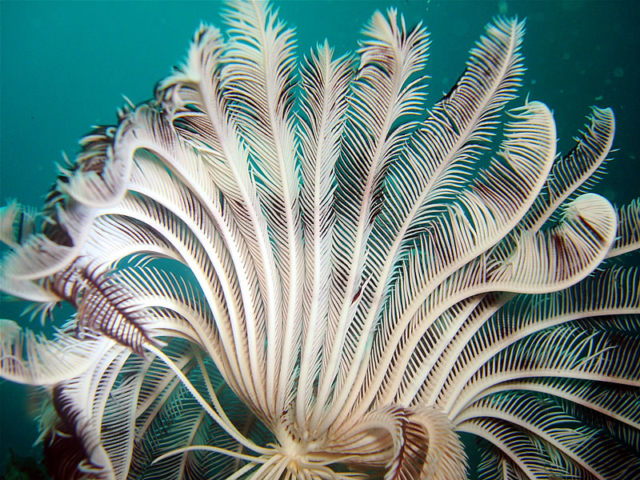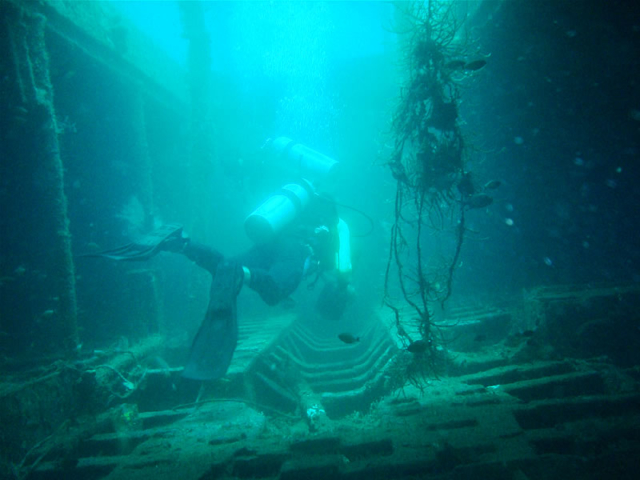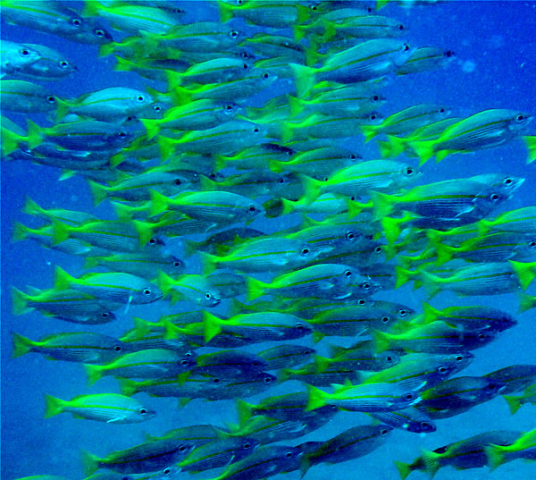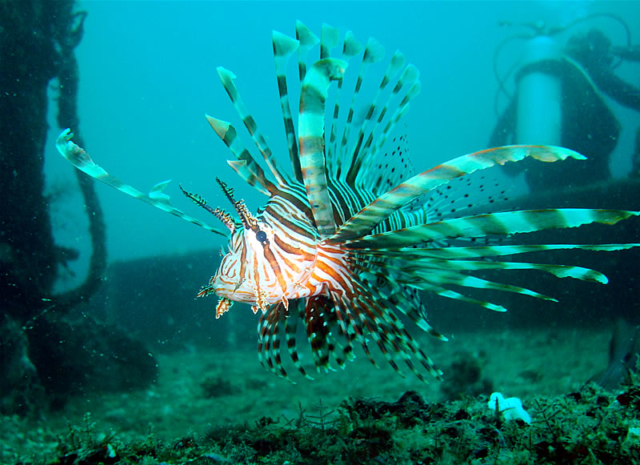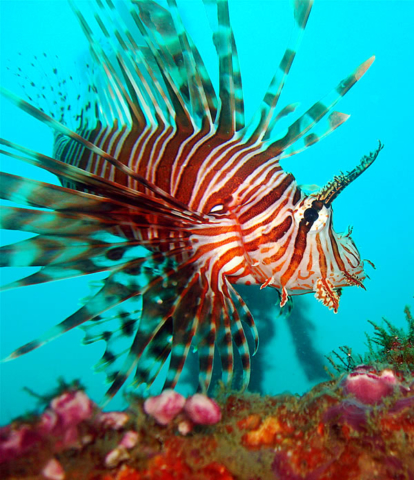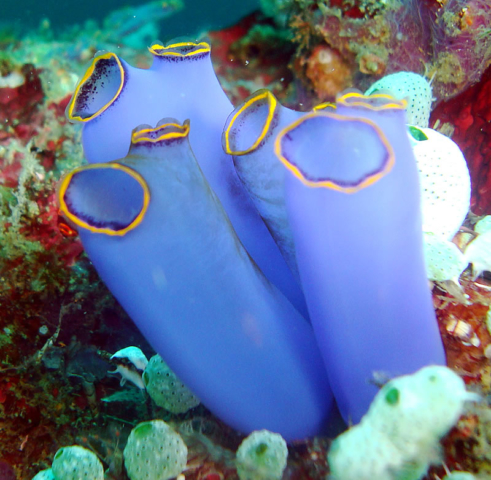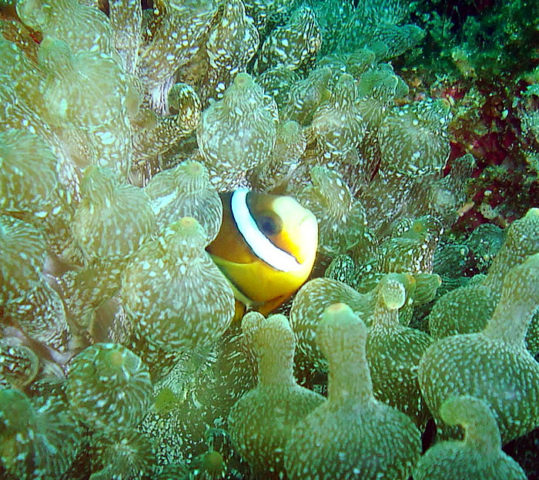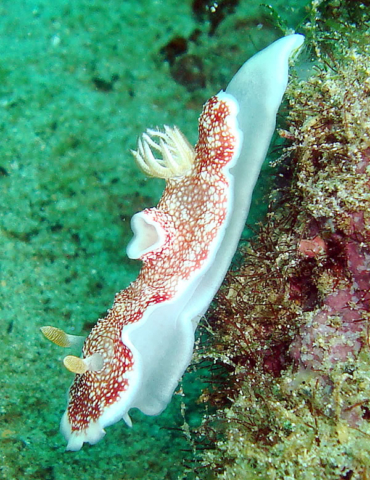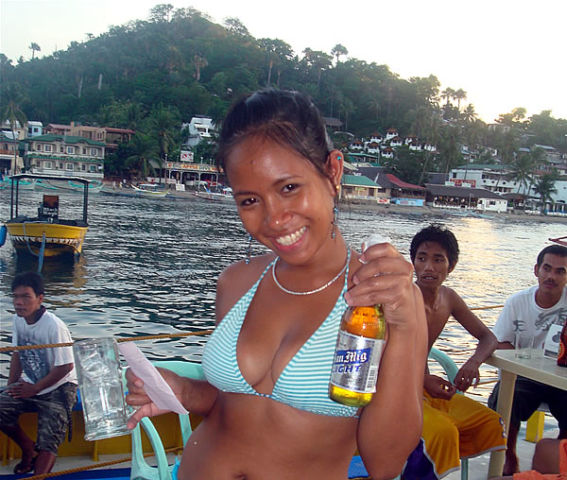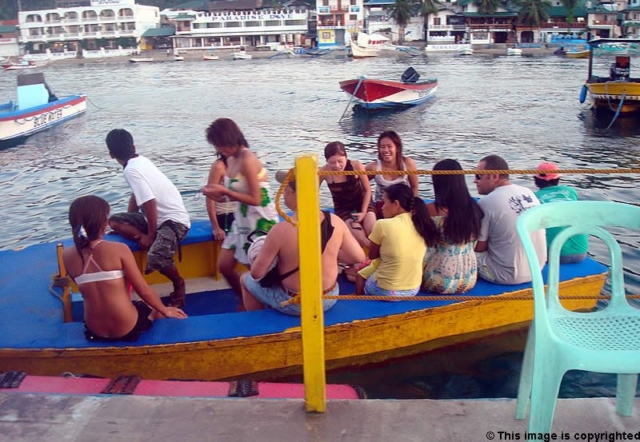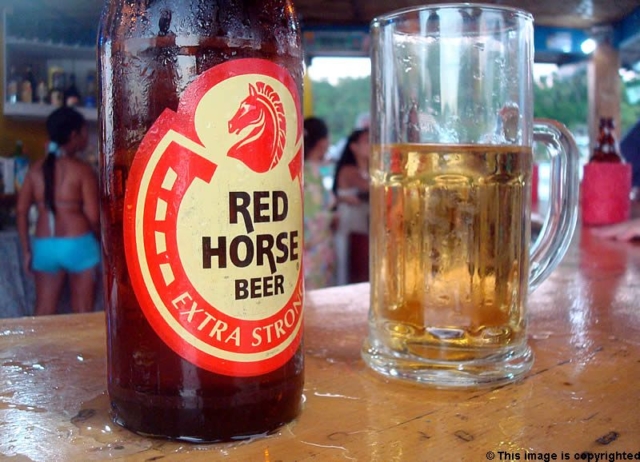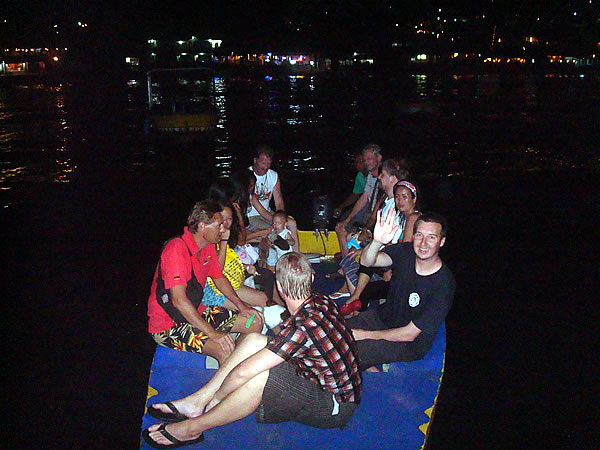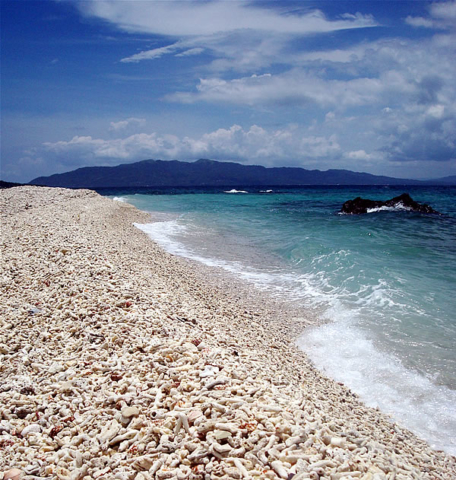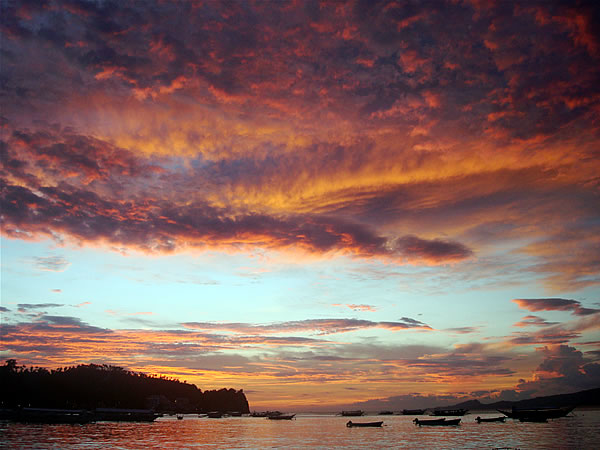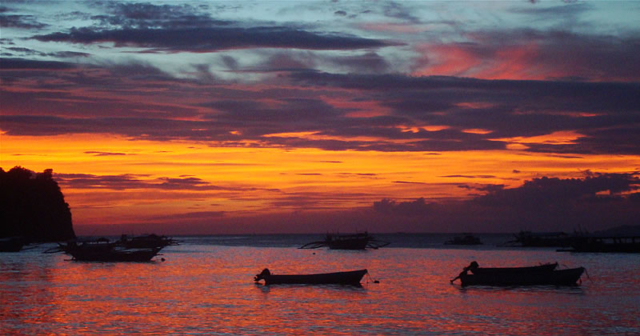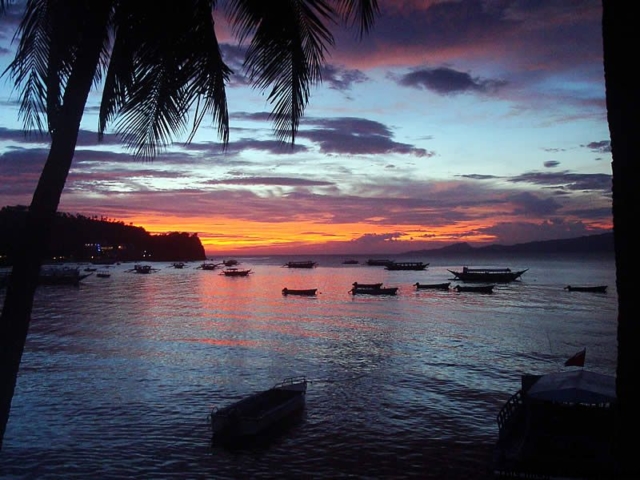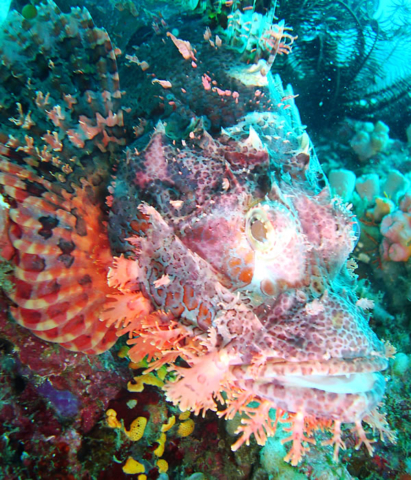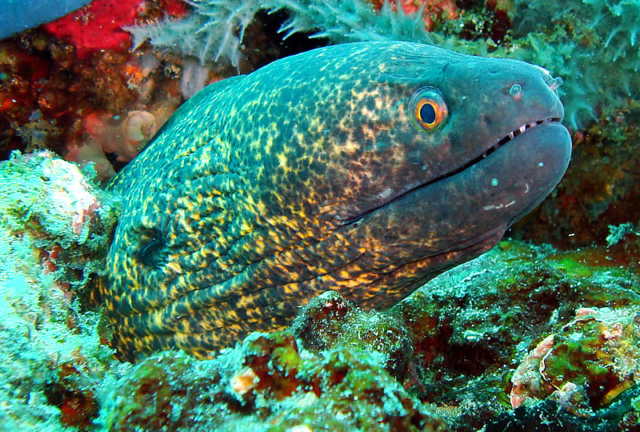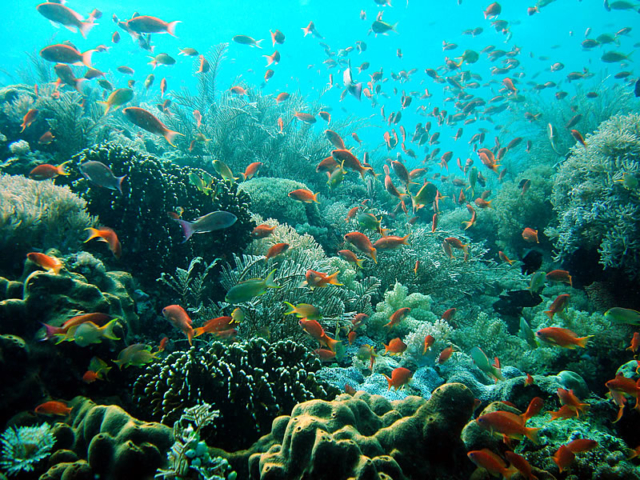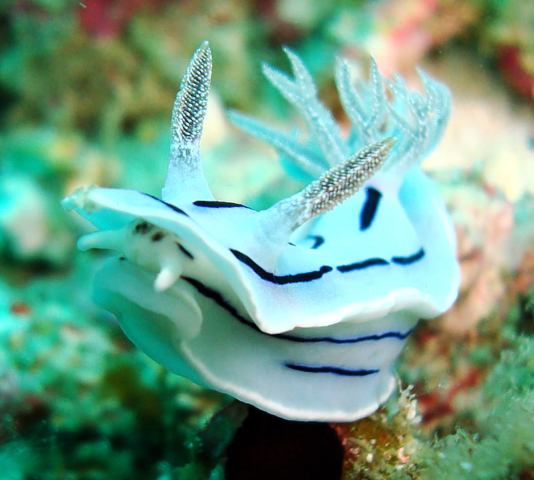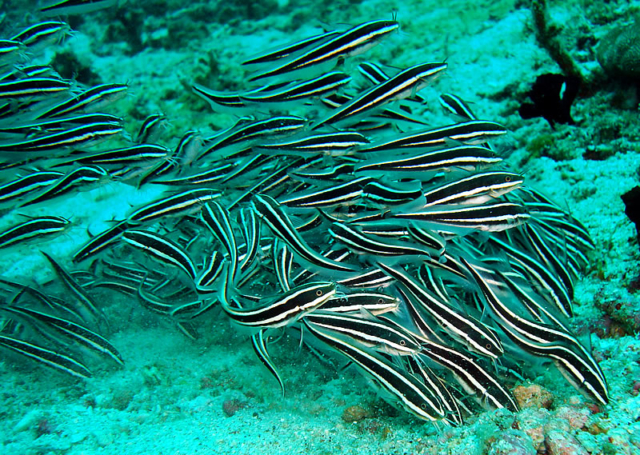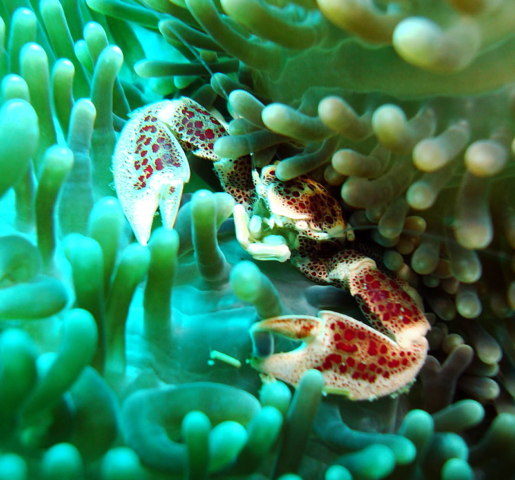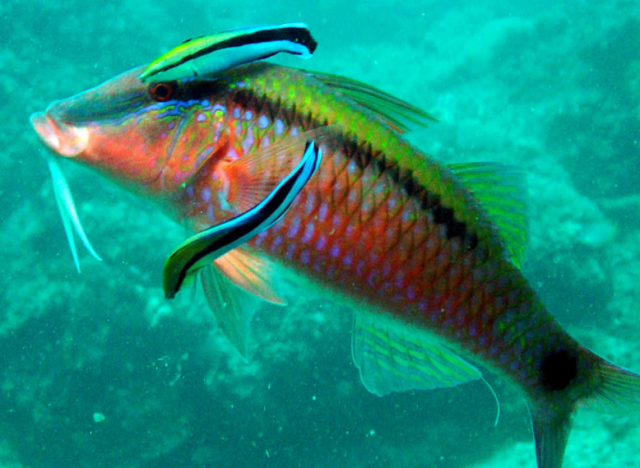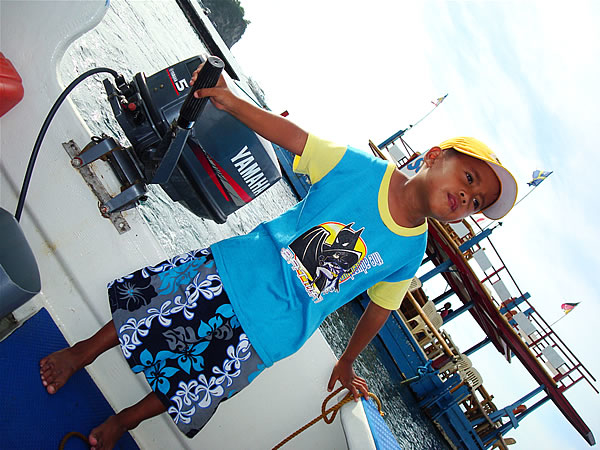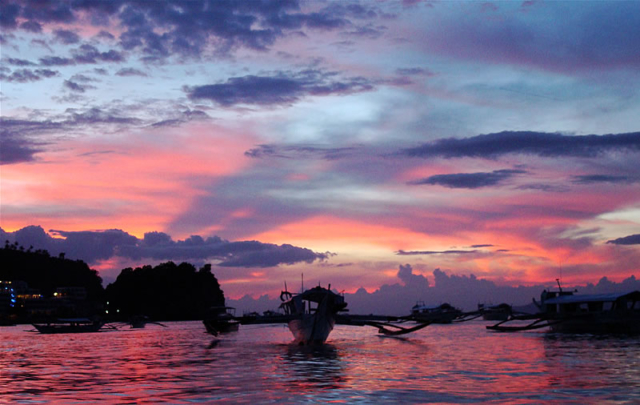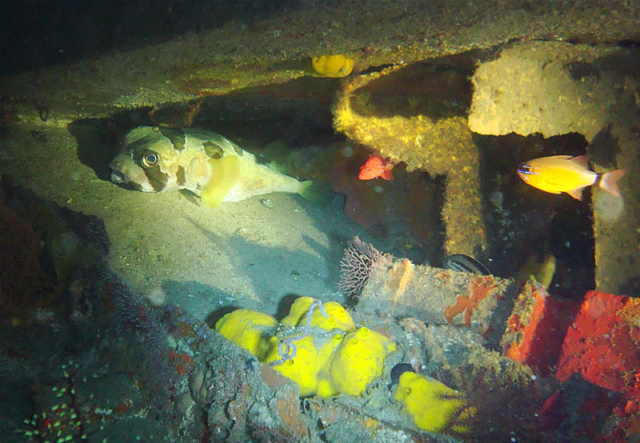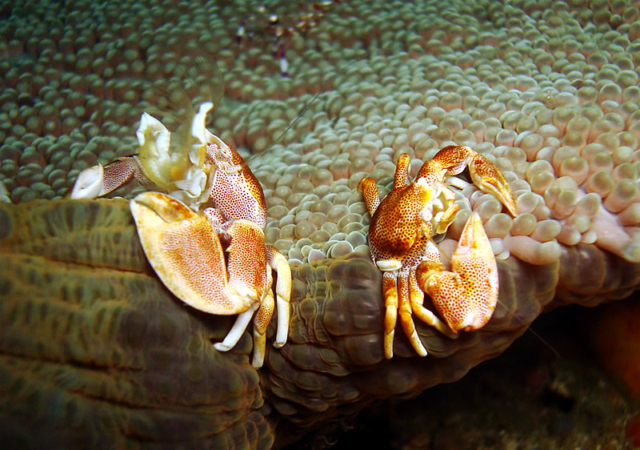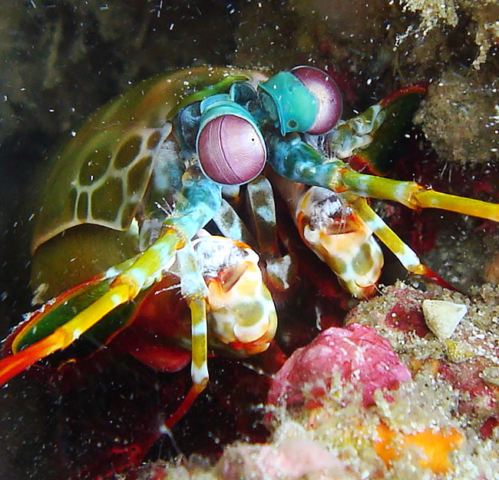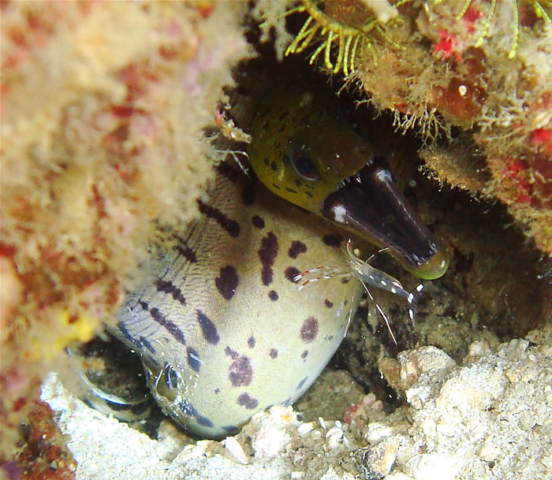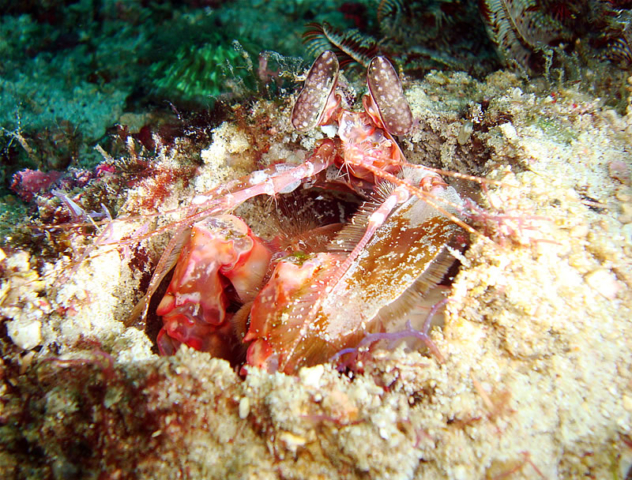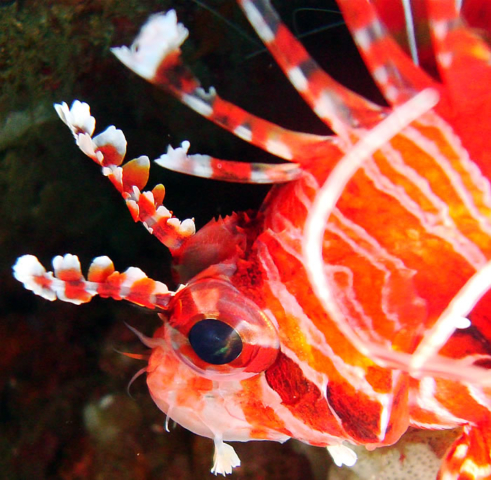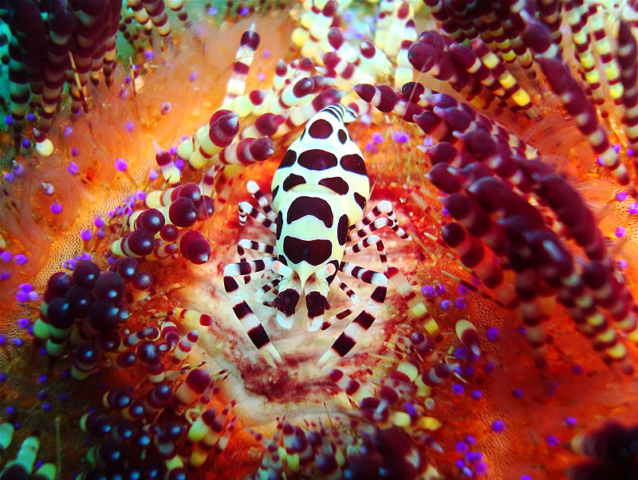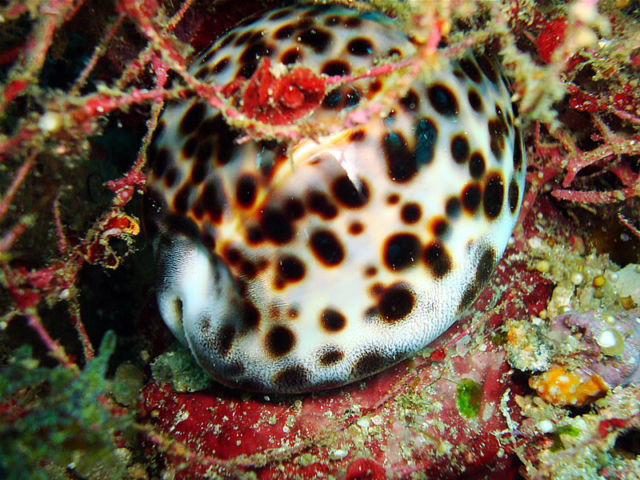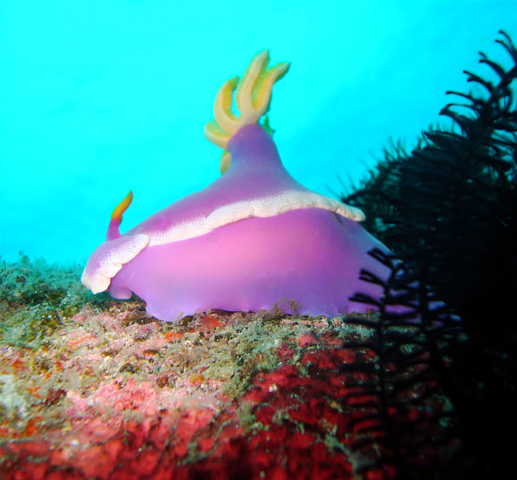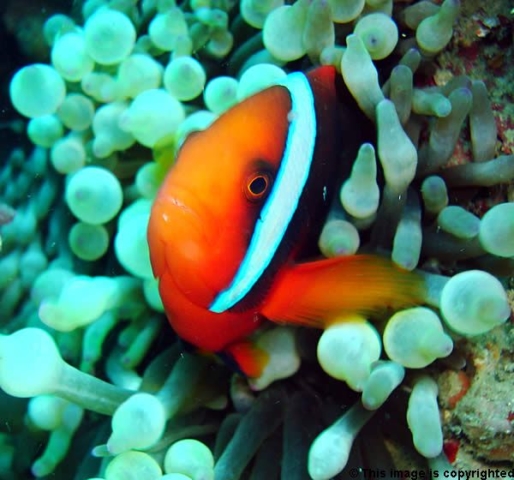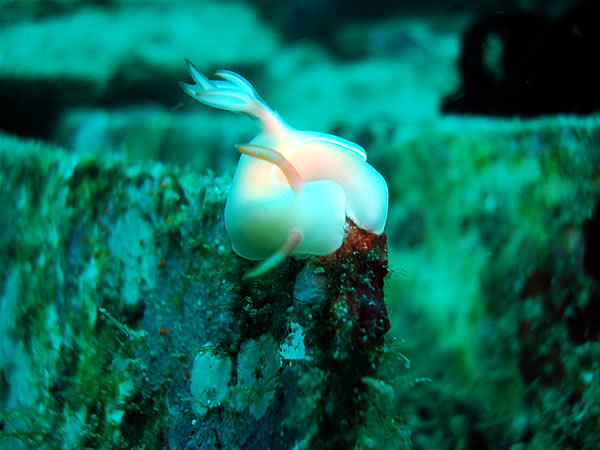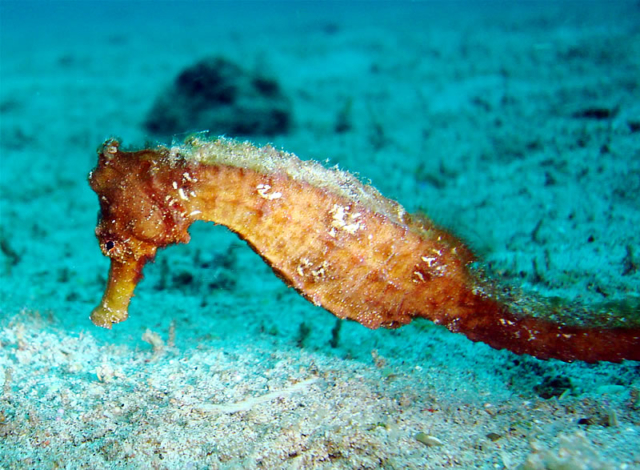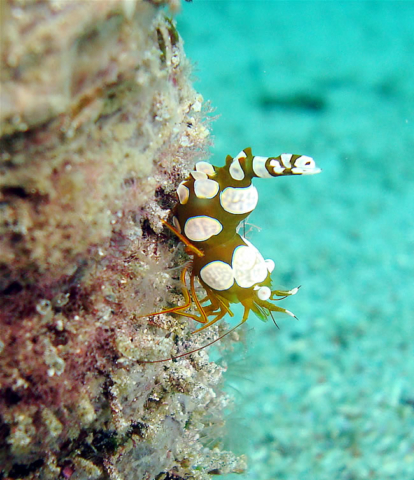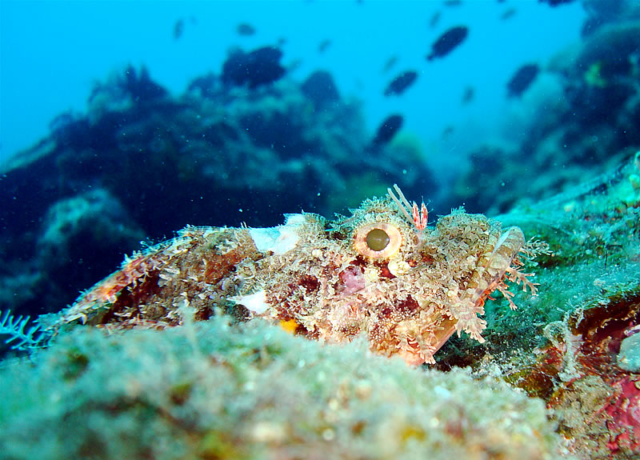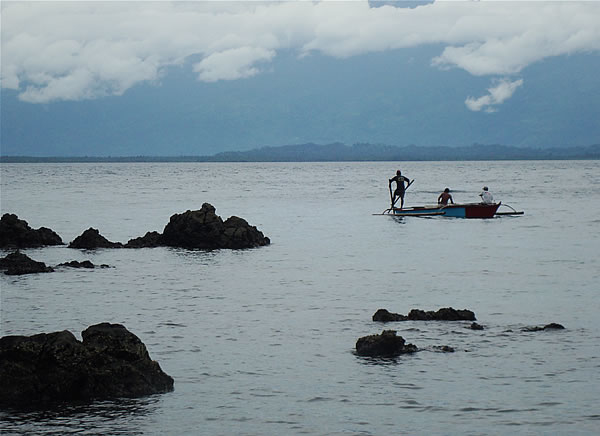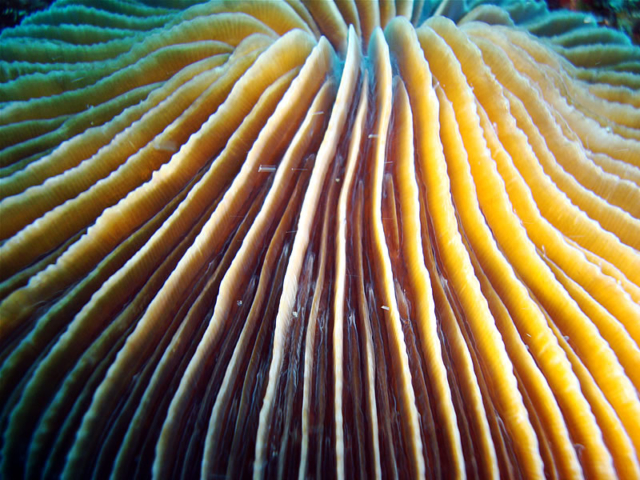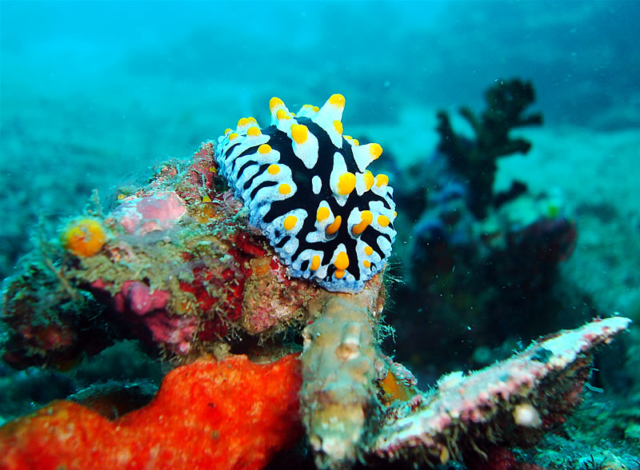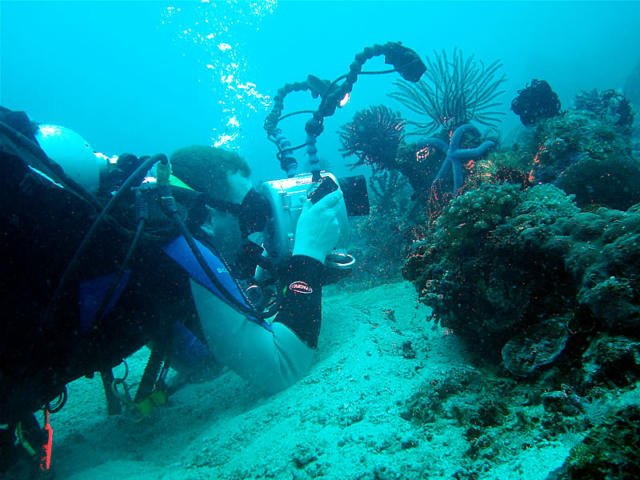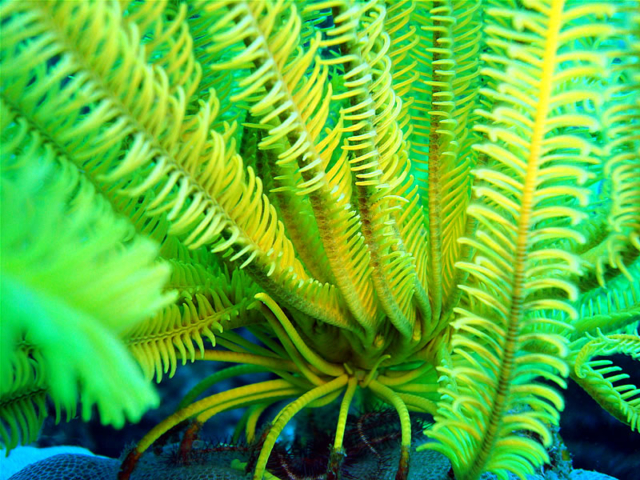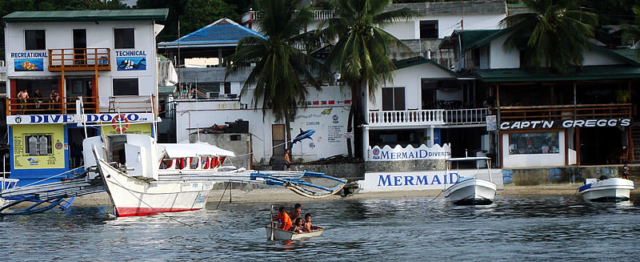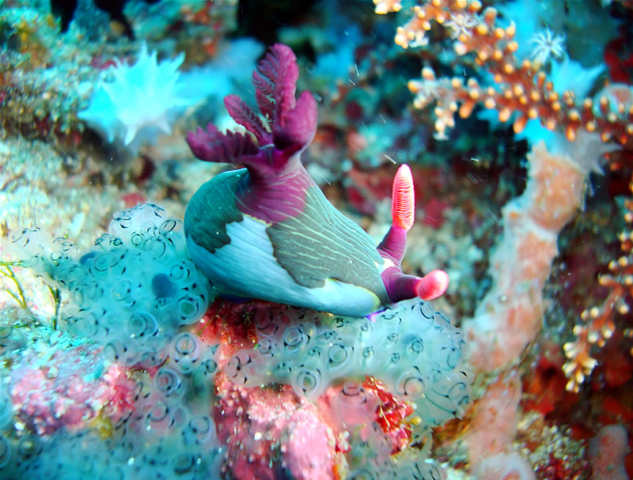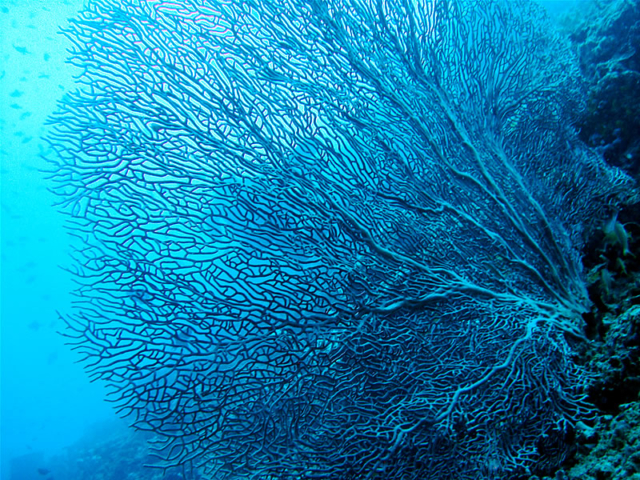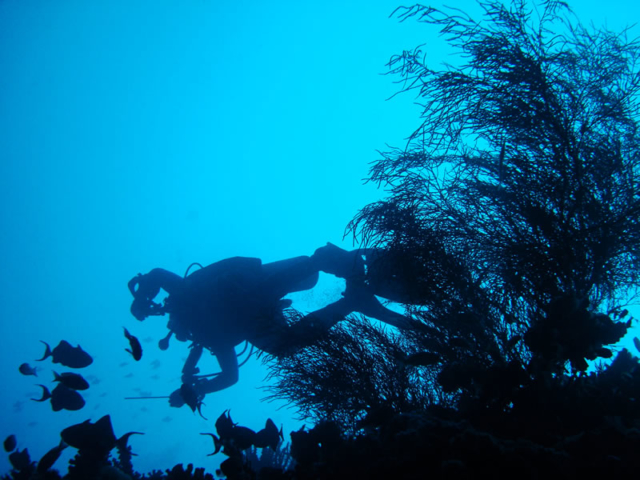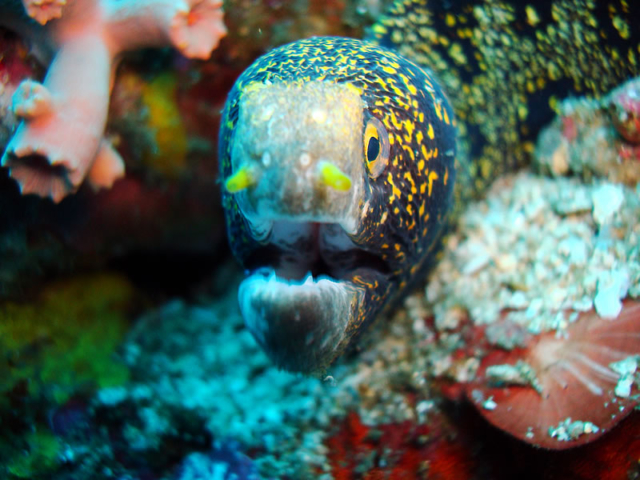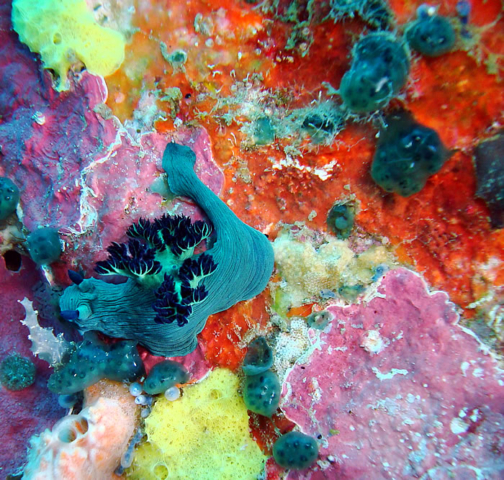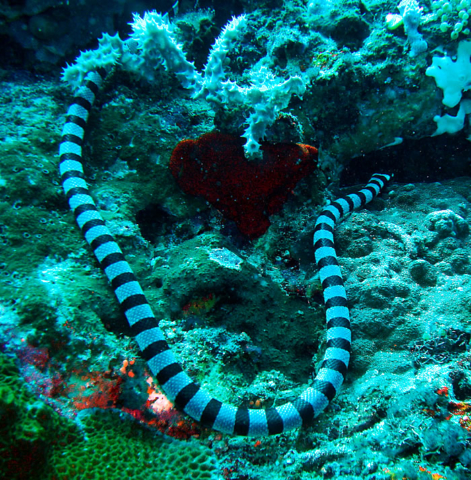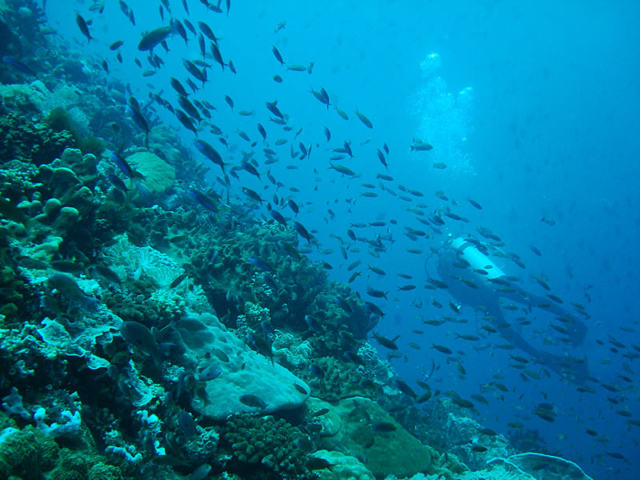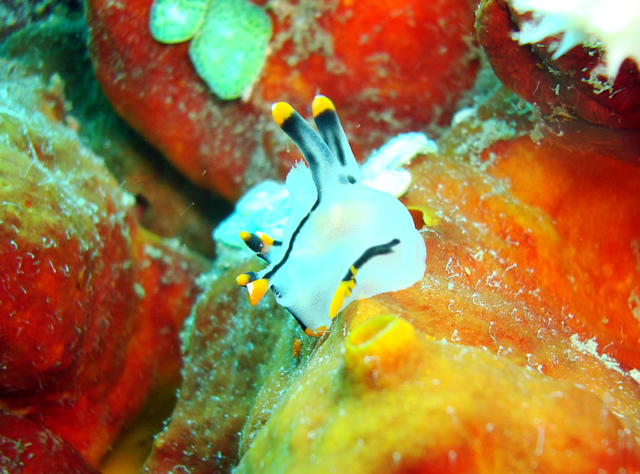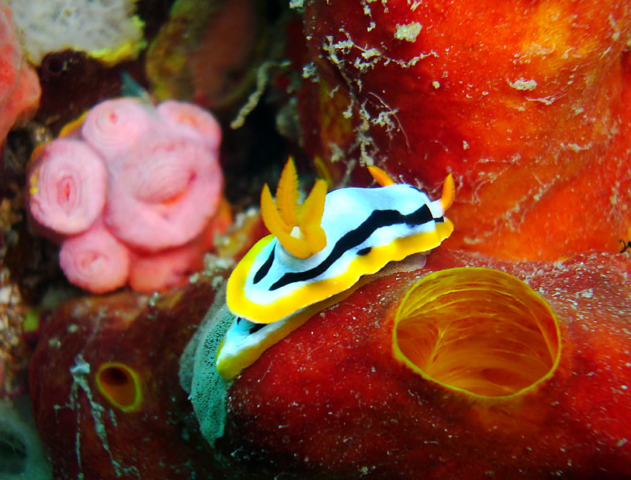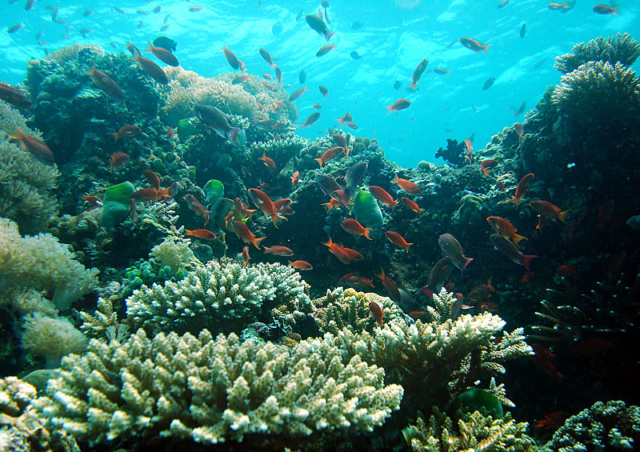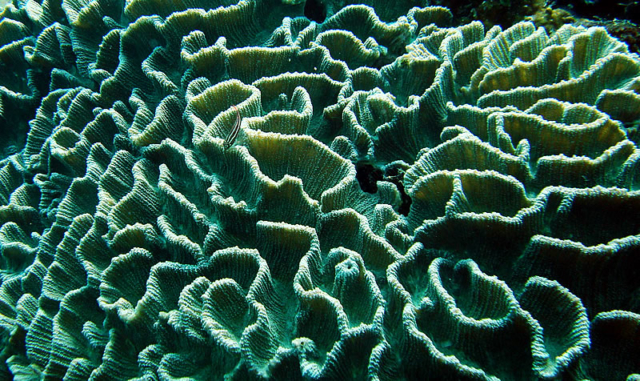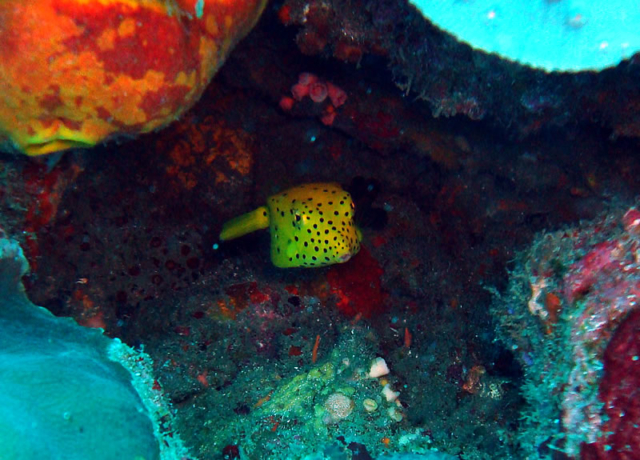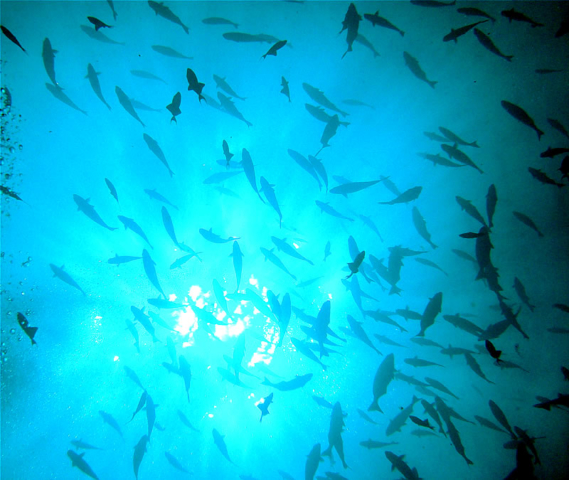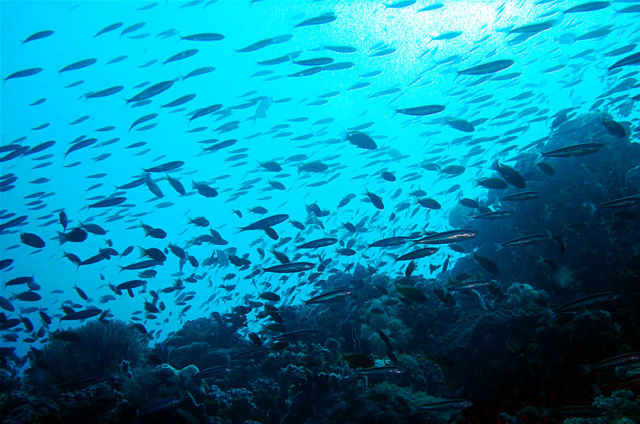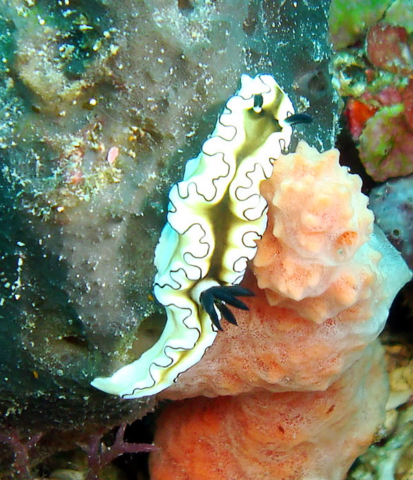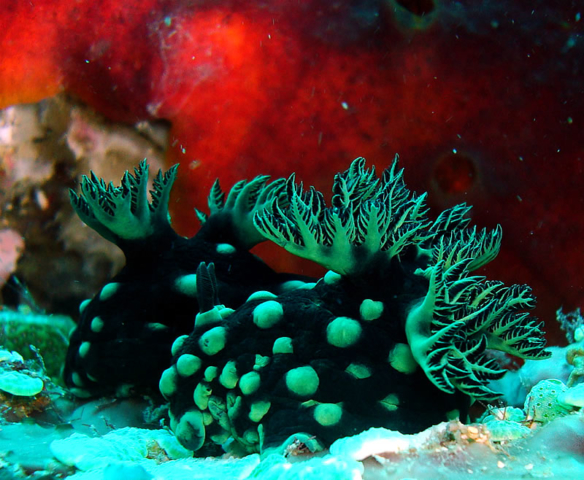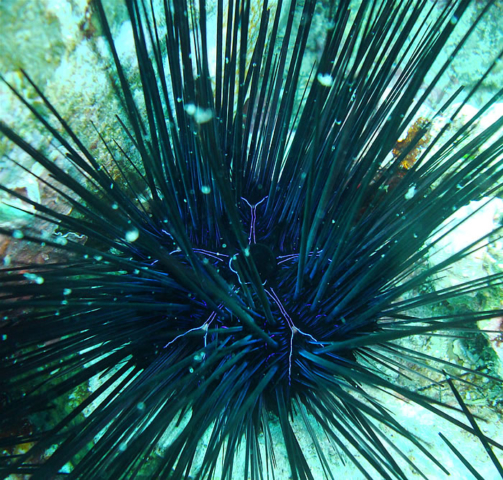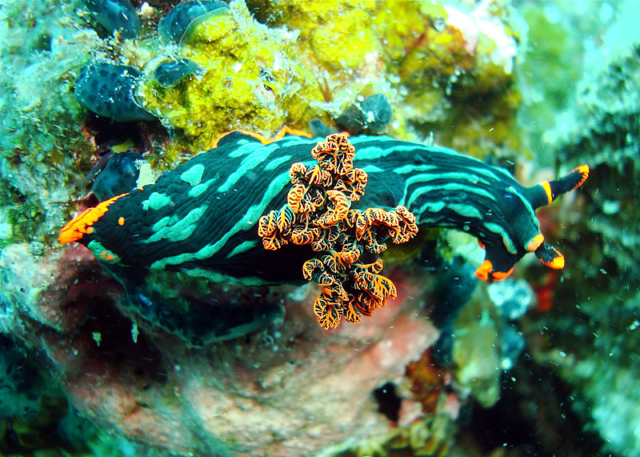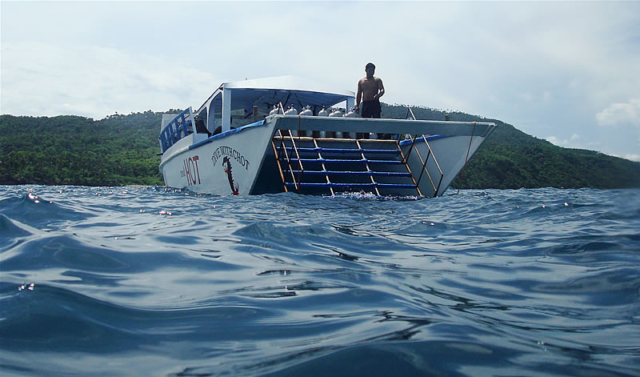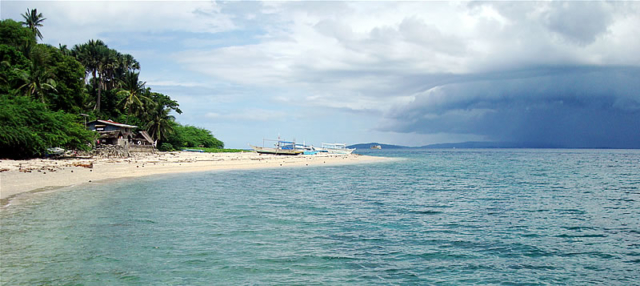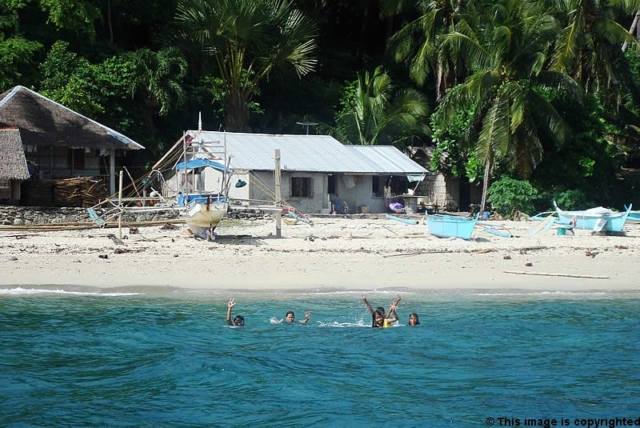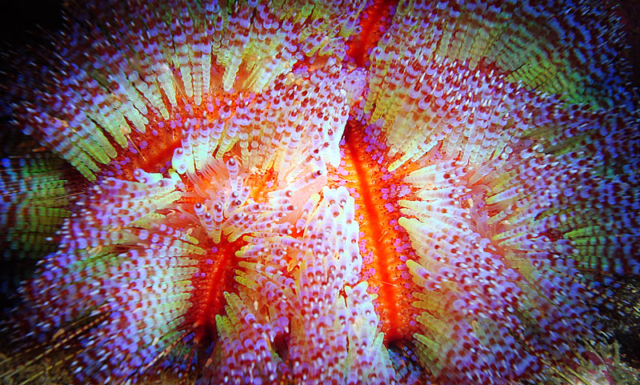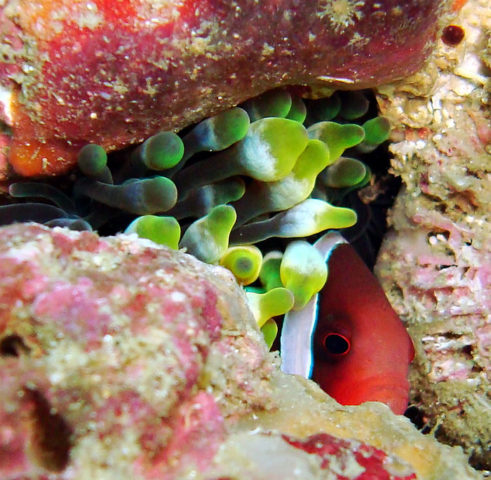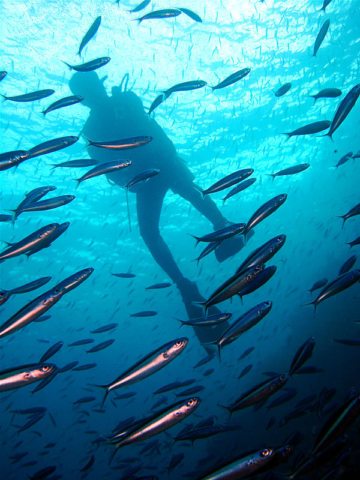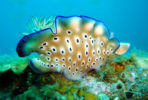On The Road Asia > Philippines > Philippines, underwater Mindoro
Philippines, underwater Mindoro
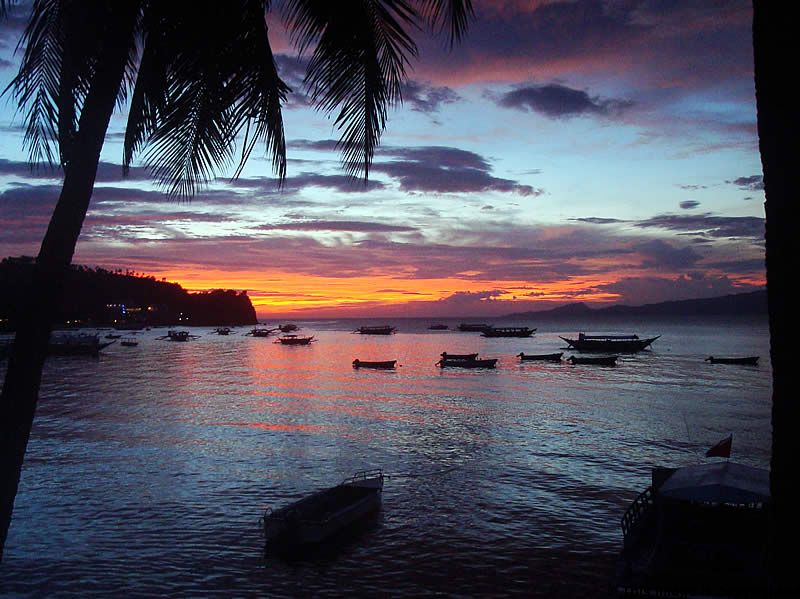
One year on, the lure to return to Mindoro Island in the Philippines to sample its sub-aqua delights had been too strong to resist. The cluster of dive shops, restaurants and bars clinging to the shoreline of Sabang Bay slowly came into focus as the ferry from Batangas inched closer to its destination. For the next eight days I would explore the local islands and dive sites with the hope of discovering something new in this underwater wonderland. The area is part of the Philippine section of one of the most diverse ecosystems on the planet and home to more than 75% of all known coral species: the Coral Triangle.
The dive team at Sabang Inn is known for its tendency to get out in search of undiscovered dive spots, and there are hundreds around the island still waiting to be found. The town of Puerto Galera, meaning “Port of Galleons”, was given its name during the Spanish colonial occupation of the Philippines in the early 16th century. The excitement of a new find lingers today as the remains of Spanish galleons and the treasures within are still being discovered. Our divemaster, Randy, was keen to tell me about the collection of artefacts and porcelain he has found while diving in the area over the past few years.
Sabang itself is perched on the northeastern tip of Oriental Mindoro and boasts more than 30 dive sites within a 10-minute boat ride from the beach resort. Our dive shop was named after Chot, the animated local instructor who has been diving for longer than I’ve been alive and has a few stories to tell! Local dive sites ranged from scuttled cargo vessels to drifts along walls to coral gardens playing home to all manner of macro critters; however, Chot and the team were more interested in the islands and undiscovered diving further afield.
MV Alma Jane is a cargo vessel that was scuttled right in the middle of Sabang Bay about seven years ago in an effort to create an artificial reef. Today it lies upright in 30 metres of water and is home to inquisitive schools of batfish and fusiliers, and lots of lionfish lurking in the shadows of the hull waiting for a meal to swim by. It was on this dive that I spotted my first frogfish, a white juvenile cunningly camouflaged on a sponge of identical colour and texture growing on the wreck.
More macro delights could be found while muck-diving around the bay. Three broken remains of what were once seafaring vessels make up the Sabang Wrecks, and they can all be explored in a single dive. There is always something to see and something going on around the wrecks: mantis shrimp scuttled for cover, a seahorse lingered in the fronds of a plant, morays lurked in dark crevices, and juvenile anemone fish darted in and out of their protective homes in an effort to fend off my camera lens.
One of the more renowned dive sites in the area is called The Canyons; it is a perfect morning dive if the tide is high and the current is flowing, as this brings in a lot of fish to feed. Three canyons on the sea bed descend into “the fish bowl” at a depth of 45 metres where huge schools of sweetlips, groupers, jacks and snappers make up this reef rush hour as the morning feeding frenzy reaches a crescendo. The visibility was great, even at depth, making it quite deceptive; a little reminder from my dive computer brought me back to reality as I started my reluctant ascent.
Sinandigan Wall is known for its macro life, more specifically the abundance of nudibranchs along the steeply sloping reef. The wall is a kaleidoscope of colour, with a different critter pretty much everywhere you look. Anemone crabs shy away from the approaching camera, cleaner shrimp lurk in coral cracks, and nudibranchs of every colour and variation imaginable can be found as if they have been scattered like confetti across the reef. I spent a large portion of this dive trying to photograph an elusive pygmy seahorse no bigger than a thumbnail that our divemaster Randy spotted on a sea fan.
A little further afield in the Verde Passage lies a coral islet called Chicken Feather Island. Chot and the team intended to put in a permanent mooring and have an exploratory dive here. This was what I had been waiting for – but this was a crew dive, so I was the only “passenger”. Currents were fierce, so getting to the bottom quickly was our first priority; it was then that I noticed the bubbles emanating from the sea bed at a depth of about 25 metres. Volcanic activity below the surface was causing the escaping gas and creating pockets of temperature variation and thermoclines; diving through it was quite surreal. Marine life here was equally impressive, with large schools of red-tooth triggerfish, anthias, gobies and blennies feeding in the nutrient-rich waters, and some of the largest nudibranchs I have ever seen at almost 30 centimetres long. A barbecue on the boat and a walk around the tiny islet made for a perfect surface interval.
Since I left Sabang, Chot and the team have placed a statue in a cave at this site to serve as a memorial to the 12 lives that were recently lost when a ferry from Batangas to Puerto Galera went down during bad weather. The shimmering temperature gradients and thermoclines invoke an image of a ghostly apparition in the cave, adding to the eeriness of the dive site.
Motoring east for an hour towards Oriental Mindoro’s capital city of Calapan took us to another undiscovered dive spot around the Baco Islands, where more exploratory diving was on the menu. Dive briefings were short as nobody knew what to expect down there; this, of course, added to the excitement and anticipation of the dive. This one did not live up to our expectations, though, as much of the coral along the fringing reef around the islands appeared to have been dynamited for fishing. Marine life was slowly beginning to return, and the authorities are now keeping a closer eye on the area to prevent this destructive practice.
Verde Island offers the adrenaline dive: big fish, fast currents, and deep drop-offs. A pod of dolphins was spotted frolicking in the cerulean waters to our port side as we headed out to the cluster of pinnacles off the southern tip that marked the Verde Island drop-off. A giant stride and quick descent were necessary, as currents in the narrow stretch of water between Luzon and Mindoro can be fierce. The drop-off here descends to more than a kilometre deep, so care must be taken not to get distracted and drop too deep. This was easier said than done as the visibility was at least 40 metres.
The density of fish here was astounding: great sweeping schools of trevally circled above us as huge curtains of yellowtail fusiliers parted below. Thousands of orange anthias darted in and out of the coral heads along the reef, giant groupers lurked in the depths, and our eyes were constantly scanning the blue for a glimpse of something bigger. With turtles, banded sea snakes, colossal gorgonian sea fans, and hunting barracuda all in the same dive, I couldn’t ask for more.
The diving around Puerto Galera is some of the best in the world; unlike other destinations, such as Thailand, most dive spots can be reached quickly, which means more time underwater and less time travelling. New dive sites and undiscovered sub-aqua gems are still being found, as are artefacts and treasures from the galleons of old from which the town derives its name.
Sabang is about 10km from Puerto Galera town and is a rustic little beach resort consisting of an eclectic collection of bars, restaurants, guesthouses, and of course dive shops. The nightlife is more than entertaining for those seeking action of a more lurid nature. But for me, the best after-dive spot to relax was a floating bar where you could sip a chilled San Miguel beer and, from the vantage point of the middle of the bay, take in another picture-perfect sunset in the Philippines.
